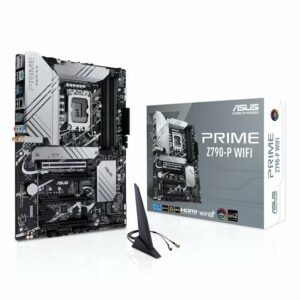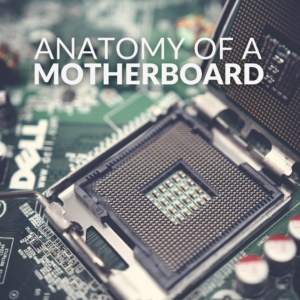We’re back with another informative series all about your PC hardware. This time we’re focusing on motherboards, highlighting all the different components and what they do.
In this blog post, we’re taking a closer look at the AAFP socket.

What is the AAFP on a Motherboard?
The AAFP, or Analog Audio Front Panel, connects your case’s front panel audio and motherboard together. This 10-1 pin header is a standard port found on most modern-day motherboards and requires an HD Audio cable. Some older PC cases may feature an AC97 cable, which is the previous standard.

It is located at the very bottom of the motherboard underneath the PCIe slots either on the left or right side. The AAFP is typically grouped together with all the other front panel connectors, such as the power, reset, and power LED.
How Does the AAFP Work?
Your PC case will have an audio jack on the front panel, typically located next to the power button and USB ports. This audio jack is both a microphone and audio connector, which is the AAFP controls. Unless you have the AAFP header plugged into your motherboard, the audio jack won’t work.
Without the AAFP you won’t be able to connect your headphones to the front panel of your case, limiting you to draping cables around the sides and back to simply plug in your audio.
Looking for Your Next Motherboard Upgrade?
Are you looking for your next motherboard upgrade? At Overclockers UK, you can find plenty of high-quality motherboards for both Intel and AMD processors. We’ve got our top picks below, but if these don’t suit your needs, you can shop the full range instead.
ASUS Prime Z790-A WiFi LGA 1700 DDR5 ATX Motherboard
- ATX form factor
- Z790 chipset
- LGA 1700 socket
- Compatible with DDR5 RAM
- PCIe 5.0


ASUS ROG Strix X670E-F Gaming AM5 Socket DDR5 ATX Motherboard
- ATX form factor
- X670 chipset
- AM5 socket
- Supports DDR5 up to 6400MHz
- PCIe 5.0
Learn More About Your Motherboard
What Do You Want to See in ‘Motherboards Explained’
What other motherboard components do you want us to cover in our ‘Motherboards Explained’ series? Let us know in the comments.



